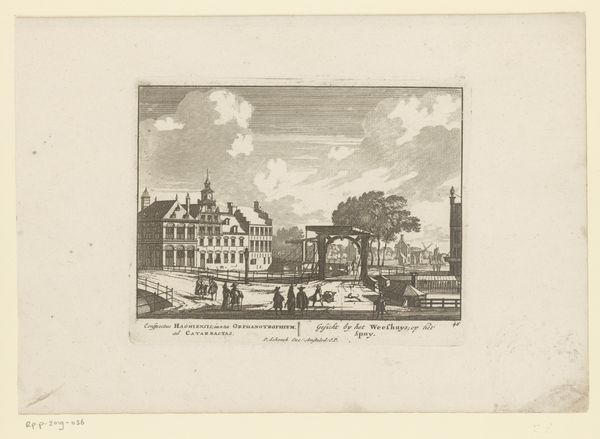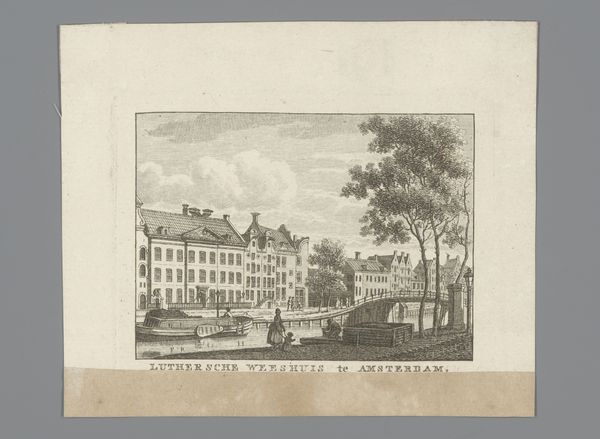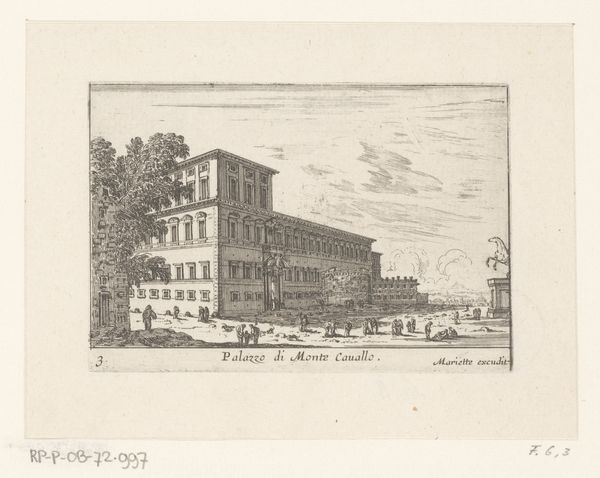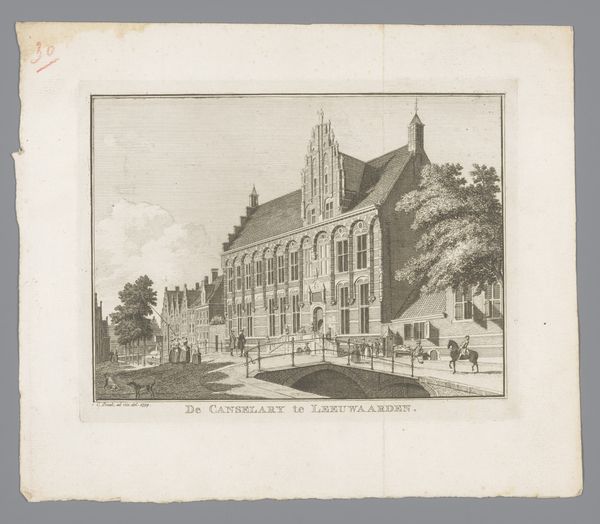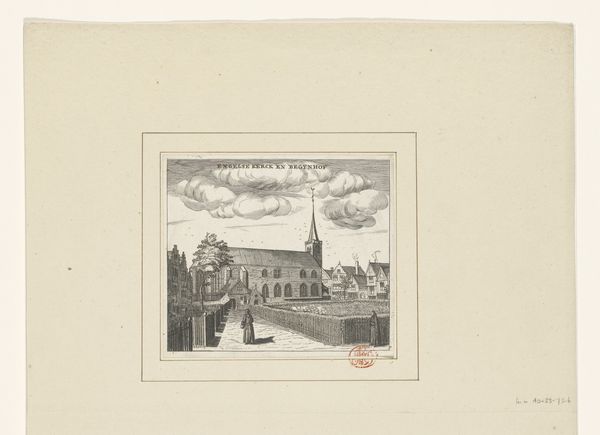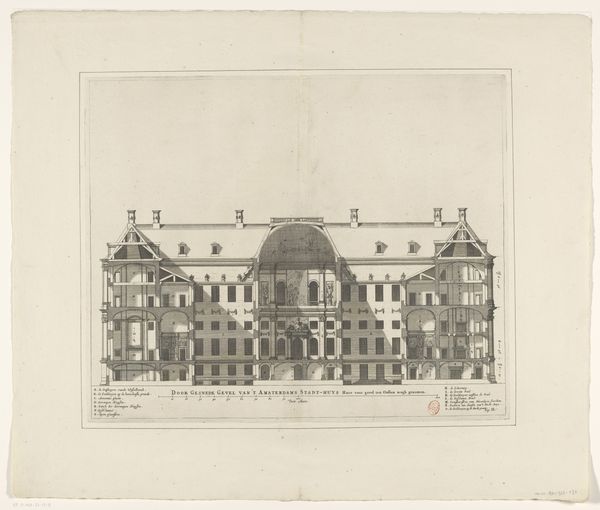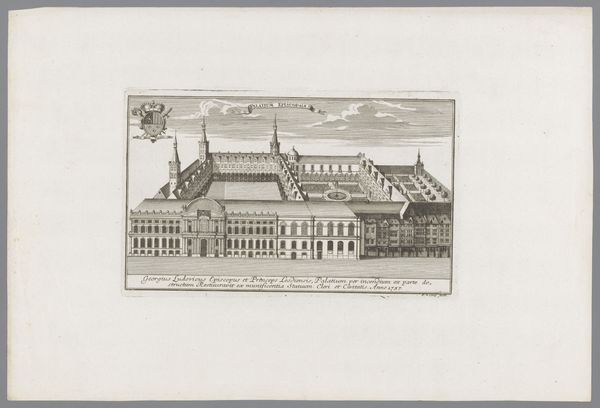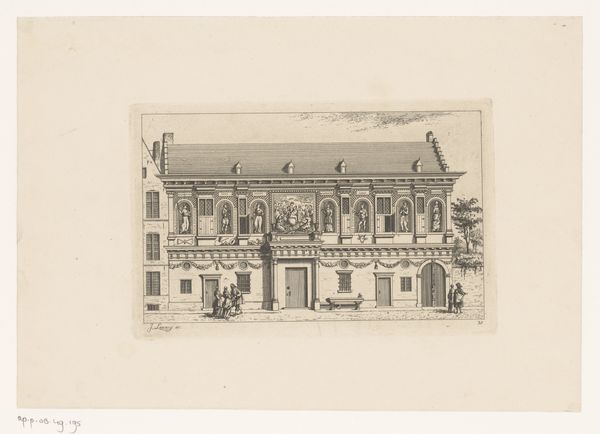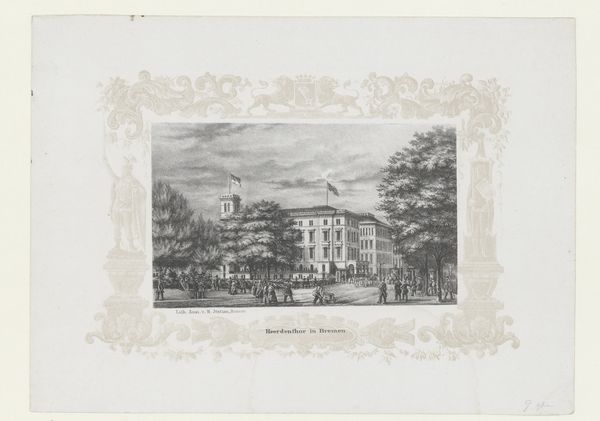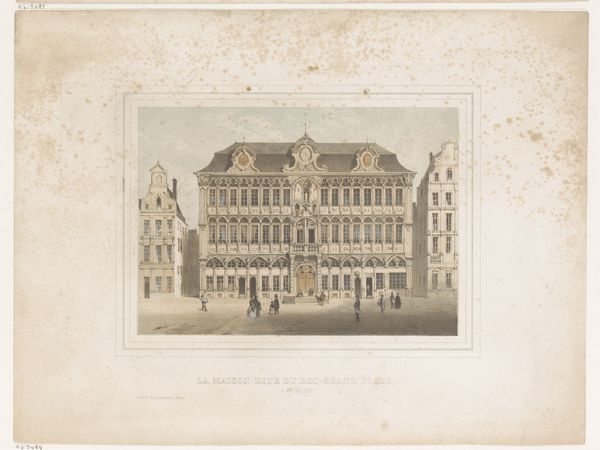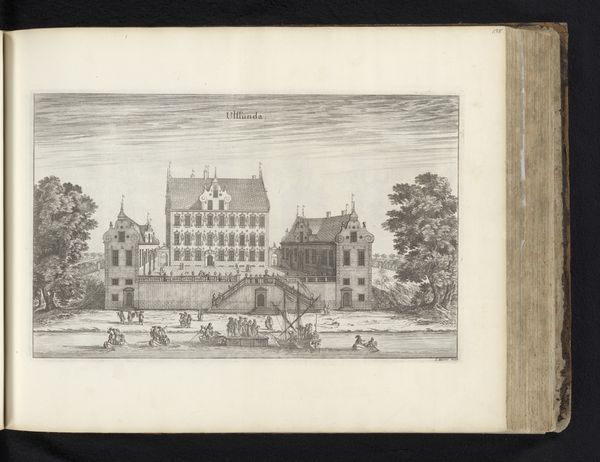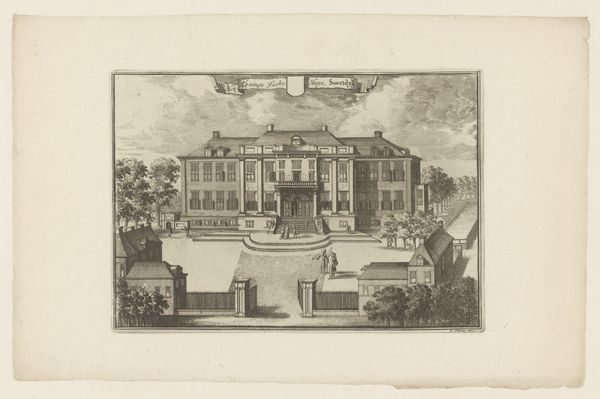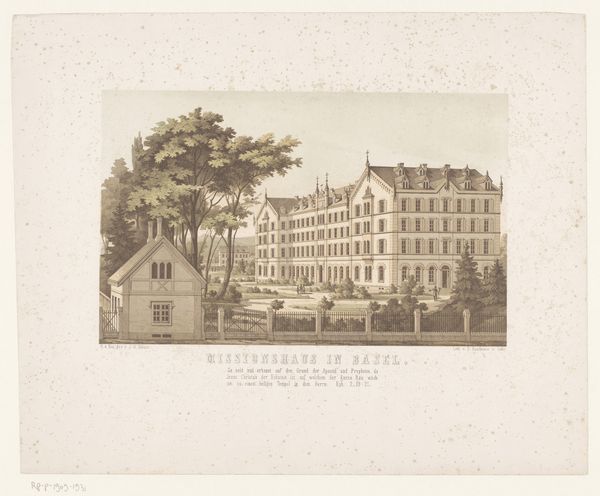
print, etching
#
dutch-golden-age
# print
#
etching
#
old engraving style
#
landscape
#
pen-ink sketch
#
cityscape
#
genre-painting
Dimensions: height 114 mm, width 140 mm
Copyright: Rijks Museum: Open Domain
Editor: This etching, "Gezicht op het Oudezijds Huiszittenhuis te Amsterdam" by Jan Veenhuysen, made in 1664, is so detailed! It’s striking how the artist captured the building's facade. How should we understand the techniques and choices within its historical context? Curator: It's important to see beyond the picturesque facade and delve into the means of its production and what it represents. The very act of creating an etching like this involves labor. The copperplate, the acid, the press... what does that material process tell us about the accessibility and dissemination of such images in the 17th century? Editor: That's a really good point. I hadn't considered the socioeconomic aspects of producing and owning prints. Were these images meant for the elite, or did they circulate more broadly? Curator: Exactly! Prints like this were a commodity, reflecting the burgeoning consumer culture of the Dutch Golden Age. This "Huiszittenhuis" – a type of almshouse – provided aid to the poor. By creating and selling prints of such institutions, artists participated in a complex system where poverty and charity became subjects of artistic and economic interest. Who was buying these, and what were they buying into? A sense of civic duty? Religious obligation? Editor: So, the image itself becomes part of the system it depicts. Did Veenhuysen choose etching for a specific reason? Could it relate to the work, class, or income? Curator: Possibly. Etching allowed for relatively quick reproduction, making it suited for meeting the demand for cityscapes. But, furthermore, consider how the *style*—its level of detail— relates to the overall material reality of both printmaking and the almshouse it pictures. Where are the imperfections or inconsistencies in the scene? These may reveal much about what was emphasized (or intentionally downplayed) by Veenhuysen. Editor: I see... By exploring the production and materials, we can gain a deeper insight. This helps me understand art beyond just the visual experience! Curator: Precisely. It moves art analysis from simply seeing, to critically examining how material realities have defined representation and its reception.
Comments
No comments
Be the first to comment and join the conversation on the ultimate creative platform.
